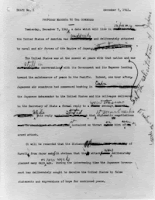
I must admit: I have been hesitating to write this second installment to
Discount Wars. The first part is
here. In my last post on this subject I detailed how the IRS is using a certain provision in the Internal Revenue Code, specifically Section 2036, as a weapon to attack the discounting of Family Limited Partnership (“FLP”) interests. Transferring property to an FLP is a technique sometimes used to reduce estate taxes in large estates.
The reason I have hesitated in writing this second installment, quite honestly, is that after posting Part 1 I realized that I would have to actually explain IRC §2036, this IRS weapon of choice. Section 2036 is hardly light reading. In effect, I “blogged” myself into a corner (assuming that the word “blog” is a verb.) But, here goes…
First, as a preliminary explanation: There are certain sections of the Internal Revenue Code providing that certain “gift” transfers to others remain in the giver’s estate for estate tax purposes. The reason is simple: Givers don’t always transfer all of their interest, but often want to keep something back. Many of us get confused with this, in that we think of a “gift” as just that — something we completely give up our right to. Not many of us give a Christmas gift, and say to the recipient, “don’t get too attached to that new Rolex watch. I might call you next week and demand it back.” But making a “gift” that is completely revocable (as in this most extreme example) would place this “gift” squarely back into the estate of this giver, most specifically under a different section of the Code, IRC §2038.
Considering this example, certain people, me included, would question whether a “gift” which is revocable is truly a “gift” in the first place. But that’s really the point of keeping the property in the estate of the “giver,” isn’t it? The point is that some transfers appear to be “gifts” on the surface, but really aren’t.
Section 2036 is directed to a more subtle situation. The issue isn’t so much “give that back!” Rather, the point of Section 2036 might be paraphrased: “You can have this when I am done with it.” The pertinent part of Section 2036 provides that the estate of the giver shall include a transfer of property, where he or she retains “possession or enjoyment of, or the right to the income from, the property” for his or her life, or “a period not ascertainable without reference to his death, or for any period which does not in fact end before his death…”
Therefore, retaining a life estate or an income interest to the property that you “give” away will generally place the property right back into the estate of the “giver.” The reason for this is our simple
mortality. After all, all of us only have a
life interest in all the property we own, anyway (i.e., “you can’t take it with you.”) Thus, by retaining a
life interest in property but “giving” away the rest, we are not giving up much. Are we?
So, where’s the gift? Of course, that’s Congress’ point when enacting Section 2036, and the point of the IRS when enforcing that section.
In my next installment I will discuss how the IRS uses Section 2036 to attack FLP interests and discounting.
Update: Before I get e-mails or comments on this issue, I want to point out that I recognize retaining only a lifetime interest usually precludes the “giver” from selling or consuming the property — something that an outright owner can do. Giving away an apartment complex but retaining the lifetime interest (i.e., the rent) does not mean that the giver can sell the property. However, the fair market value of the building, itself, would probably end up back in the “giver’s” estate as of the date of his or her death under Section 2036.
This qualifies my statement that “retaining a life interest in property but “giving” away the rest, we are not giving up much.”
 I came across this article by the Tax Prof Blog, edited by Professor Beyer. It relates to Nancy Silverton, who previously sold her restaruant in Los Angeles, La Brea Bakery, for $5 million. But she then lost all of it after she gave it to Bernard Madoff for investment. Madoff is alleged to have swindled investors to the tune to the total of $50 billion.
I came across this article by the Tax Prof Blog, edited by Professor Beyer. It relates to Nancy Silverton, who previously sold her restaruant in Los Angeles, La Brea Bakery, for $5 million. But she then lost all of it after she gave it to Bernard Madoff for investment. Madoff is alleged to have swindled investors to the tune to the total of $50 billion.






